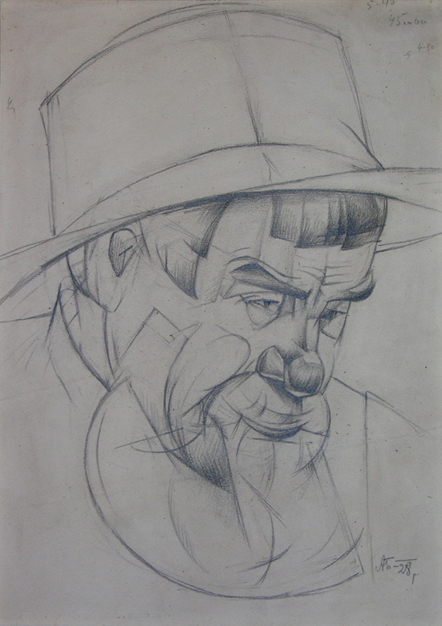Alexander Konstantinovich
Bogomazov
Ukraine, 19th – 20th Century
Alexander Bogomazov was born at Yampol’ in the Kharkov region
of the Ukraine in 1880. He studied at the Kiev Art Institute from 1902
– 1911. He studied under V.K. Menk, A. A. Murashko and I.F. Seleznev
and attended studio courses organized by Fedor Ivanovich Rerberg and
Konstantin Fedorovich Yuon in Moscow. From 1914 – 1917, he worked
at Heriusi in the northern Caucasus. In 1917, he returned to Kiev to
teach until 1922 at the school of painting. He remained close to the
Ukrainian Futurist style that revolved around Aleksandra Exter.
Bogomazov considered abstract painting as “pure painting”
and concentrated on his idea of “four rhythmic forces.”
Throughout his career, he mixed styles, Cubism and Futurism, readily
switching from the figurative to the abstract. In his treatise Elements
of Painting (unpublished, 1914), Bogomazov, at the same time as Malevich,
defines the black square as “the total sum of all art symbols.”
He thus became part of the avant garde group centered around Malevich,
Pevsner, and Gabo and in 1927 was one of the founding members of the
Association of Revolutionary Art in Ukraine. He participated in Agit-Prop,
which was a revolutionary collaboration in the decoration of the city
of Kiev.
More than just a painter or draftsman, Bogomazov proves to be a significant
contributor to elaborating on the language of abstraction in modern
art. He died in 1930 in Kiev from tuberculosis.
Bogomazov is listed in the Benezit Dictionary of Artists. He fell into
relative obscurity until his work was exhibited in the Lowe Art Museum
in Miami in 1983 and the Musee des Jacobins in Toulouse in 1991.
|

